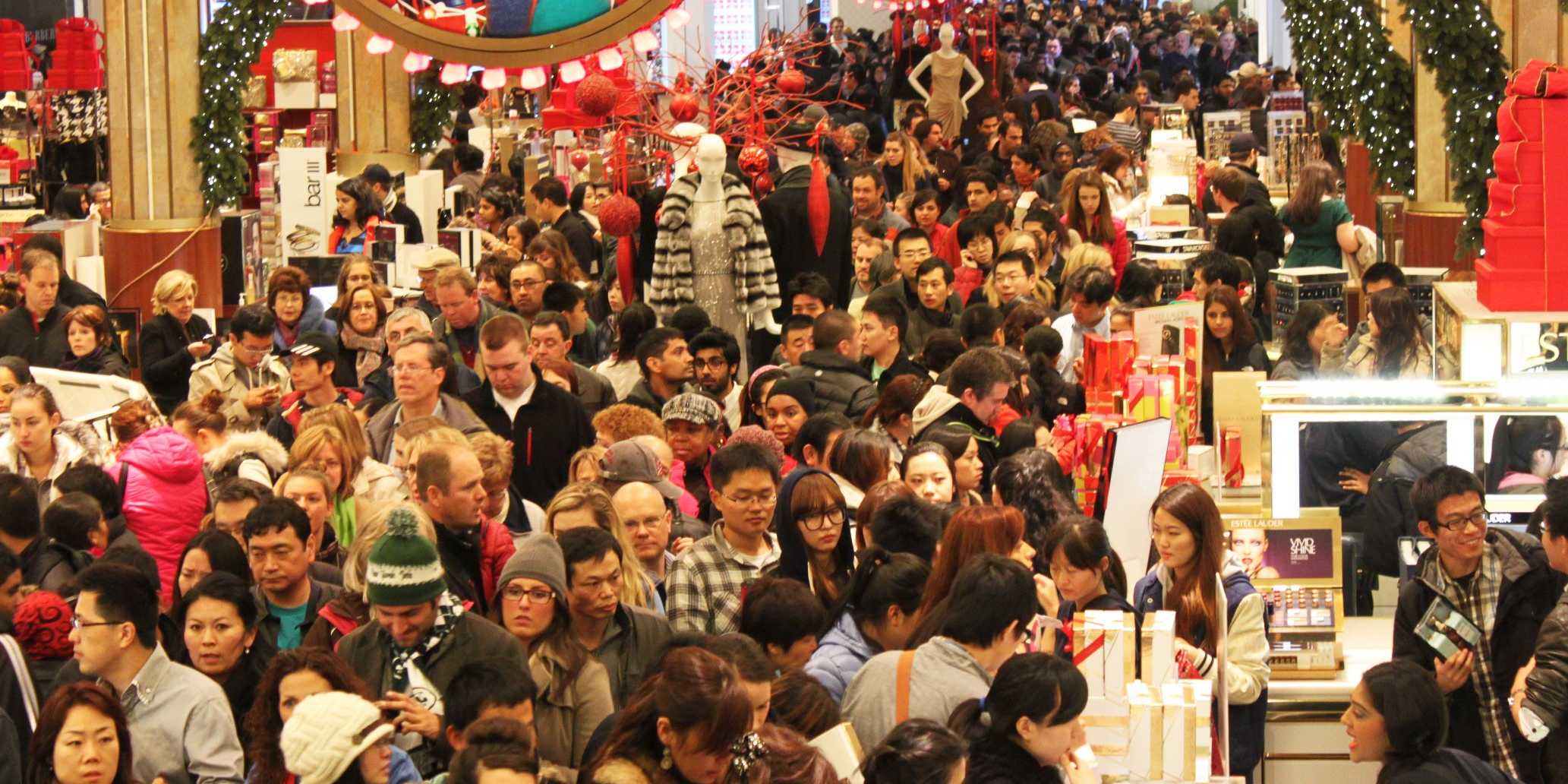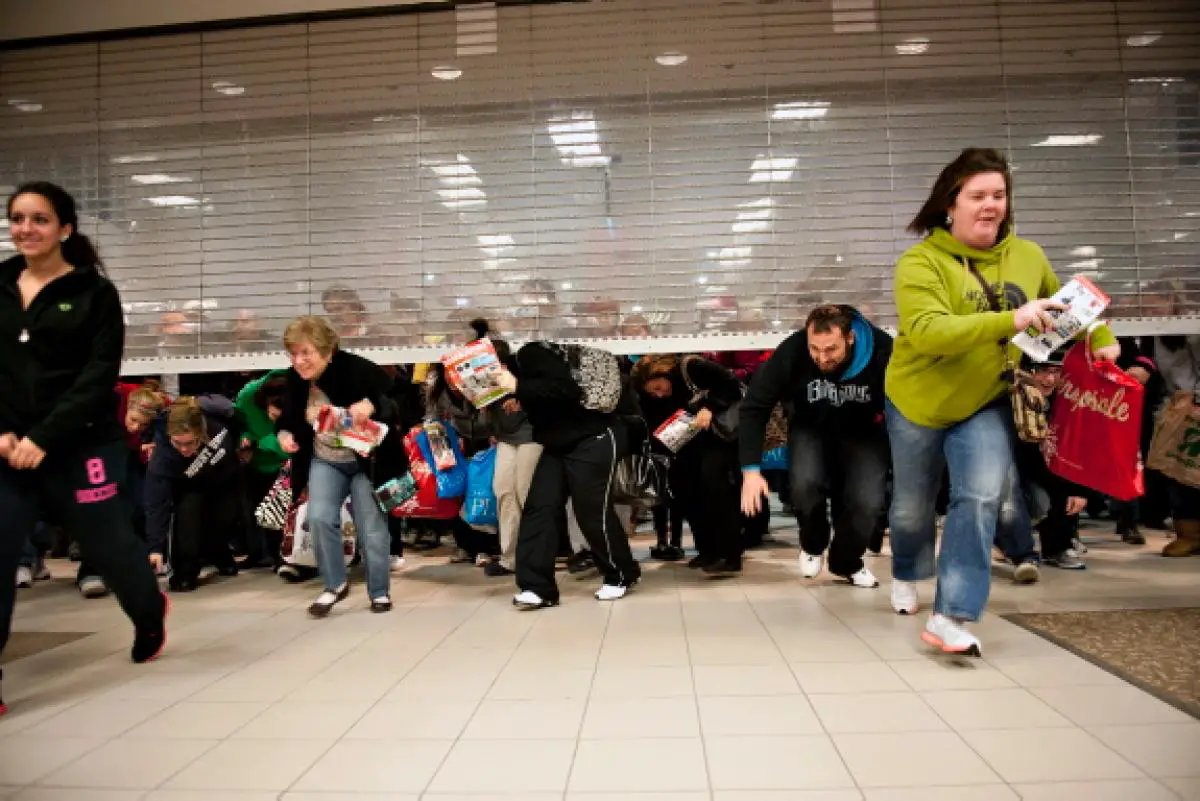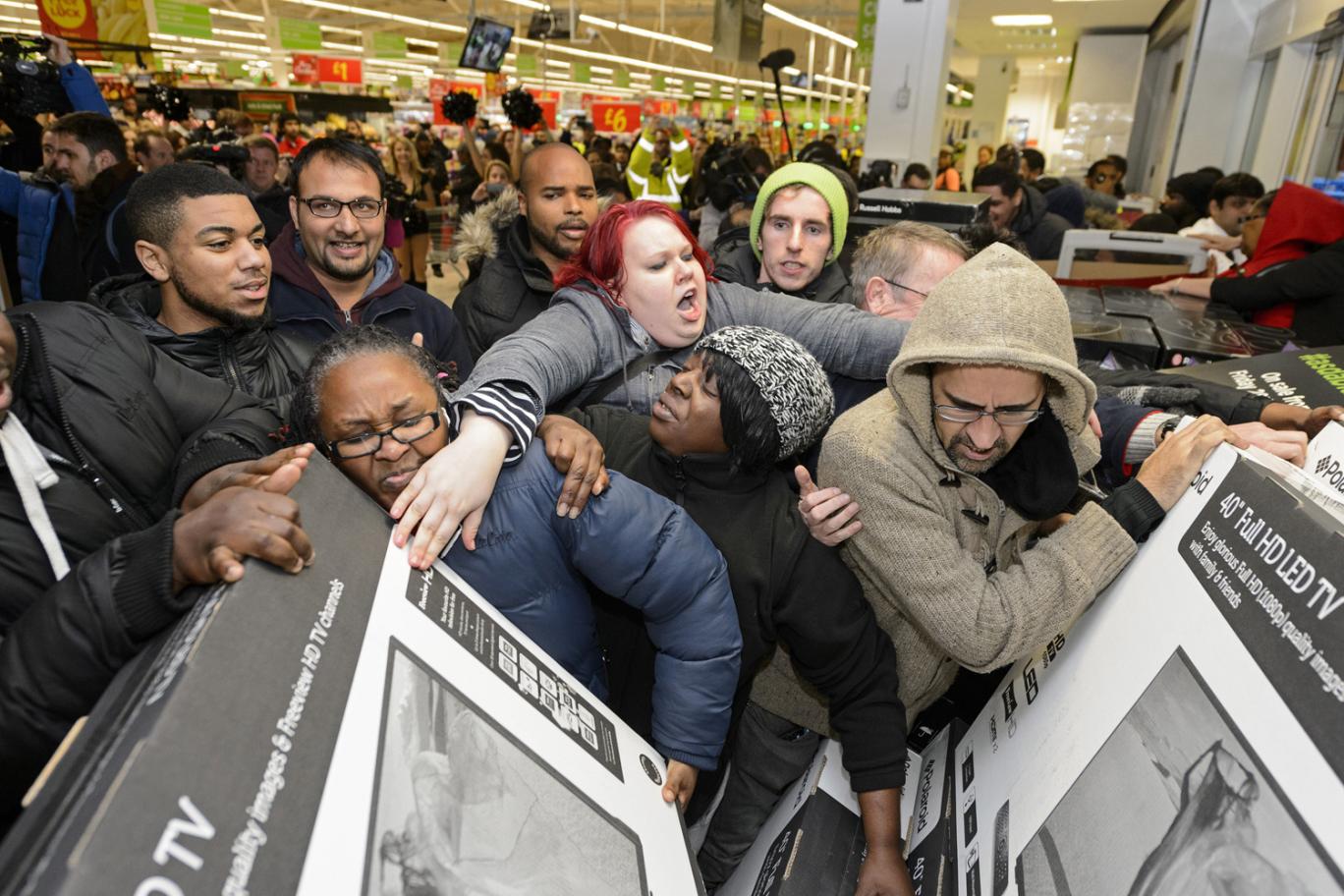Shopping Madness Is an American Trait
Sure, Black Friday exists in other countries, but when you’re not in America, nobody gets trampled for a discounted TV.
By Maria Alvarado, Savannah College of Arts and Design
The memory of my first Black Friday in America is extremely hazy.
I was only sixteen at the time, and it was my first year attending boarding school in the United States. The town where my school was located lacks shopping malls and the usual stores that attract teenagers, so I had a good amount of money saved. So, when Thanksgiving break came around and I had to fly to New Jersey to stay with my aunt for a little more than a week, I was overexcited to visit the malls and eat as much junk food as I could.
But I wasn’t the only one who was eagerly waiting to attack the stores that November. Little did I know, one of the biggest shopping events of the year was about to happen. An event that lead me to spend all my savings on clothes, books and other stuff for prices that I had never imagined before.
You can’t really blame me for not knowing. Even though I attended an American international school in my home country, the topic of Black Friday was briefly touched on in History class and vaguely described as “a positive outcome following a series of drops in the American stock market.” Besides this short description of the date, my history teachers never made further comments about the way Americans commemorate the day. In consequence, I knew more about Black Monday, Black Tuesday and Black Thursday than I did about Black Friday. Yet, it’s not a secret that Black Friday is not an event that happens only in American anymore.

Recently, I have noticed that the Black Friday fever has expanded to other countries. Three years ago, the people in my country would have never dreamed to have the amazing deals offered in America for Black Friday in the local stores. Still, not too long ago, electronic stores, clothing stores and other retailers adopted the idea of Black Friday and chose a random date to celebrate it. As a consequence, my country has two days of crazy, mindless, wallet-busting shopping.
However, there is something different about the way Black Friday is celebrated overseas and the way in which this shopping holiday is enjoyed in America.
When the day finally arrives, international media is never behind in covering the most popular stores in the U.S. as they receive their first customers and quickly fill with large multitudes. Every year, people stand outside of their favorite stores all night, sleeping in tents or plastic chairs while they wait for the sun to rise and the store doors to open. Black Friday enthusiasts don’t mind sleeping in the cold, even if it’s snowing or raining. They would do absolutely anything to get their hands on 40 percent off home stereos or a pair of Buy-One-Get-One shoes from their favorite designer brand.
It’s okay to feel excited about the shocking deals that some retailers offer their customers during Black Friday. Some retailers only offer similar discounts twice a year, so people interested are really hoping they will get their hands on their most desired items. Still, the tone of the news reports change drastically as the fourth Friday of November progresses. Toward the end of the day, video footage and pictures of people fighting over a TV, printers and cameras is plastered on the news and online.

How can one day of massive shopping turn into a day of tragedy that leaves people injured, lands them in the hospital or even kills them? To foreign people, the darker side of Black Friday makes little sense.
As an international student who has spent almost six years in the United States, I have to admit that I was only ever excited for Black Friday the first two times that I got to experience it. Even when I was not in the crowd of people waiting outside the stores all night, I did wake up pretty early to go to the mall and check out my favorite stores’ deals. At first, going in the packed stores and finding the stuff that interested me felt like a dare. However, after two hours of pushing, stumbling, having my feet stepped on and enduring long lines for the fitting room and checkout, I felt absolutely tired and wanted to go home.
When Black Friday arrives in my home country, the local media reports on the best stores to shop during the day and that’s it. There are no people camping outside of the stores or fighting to get inside because it’s prohibited. Similarly, stores clerks are particularly cautious about the amount of customers allowed inside the store at once, as they could face legal issues for over-packing the store with people. During Black Friday, security also increases to stop people from shoplifting or hurting each other. All of these measures are taken to ensure that everyone has a great time in a safe environment. Of course, they are also a result of the scary news that reaches my home country after every American Black Friday.

There’s a remarkable difference in the way people shop for Black Friday in foreign countries. The excitement is there, the offers and discounts are there, the stores are there, but for some reason people don’t seem to react the same way Americans do. The amount of people that come in the stores during the day is way smaller than the number of people in the States. In the morning, when the shopping spree usually begins in the United States, merely a couple of customers are seen entering the stores. It feels like people overseas are less willing to disrupt their usual daily routines to join in the madness of the biggest shopping day of the year.
Personally, I understand since I wouldn’t sacrifice my last hours of sleep to have my feet stepped on again or deal with the B.O. of people who left their homes so early that they didn’t even bother to take a shower. My experiences with Black Friday have taught me an important lesson that I make sure to follow each year: Wait for Cyber Monday, and do all the shopping online.

















